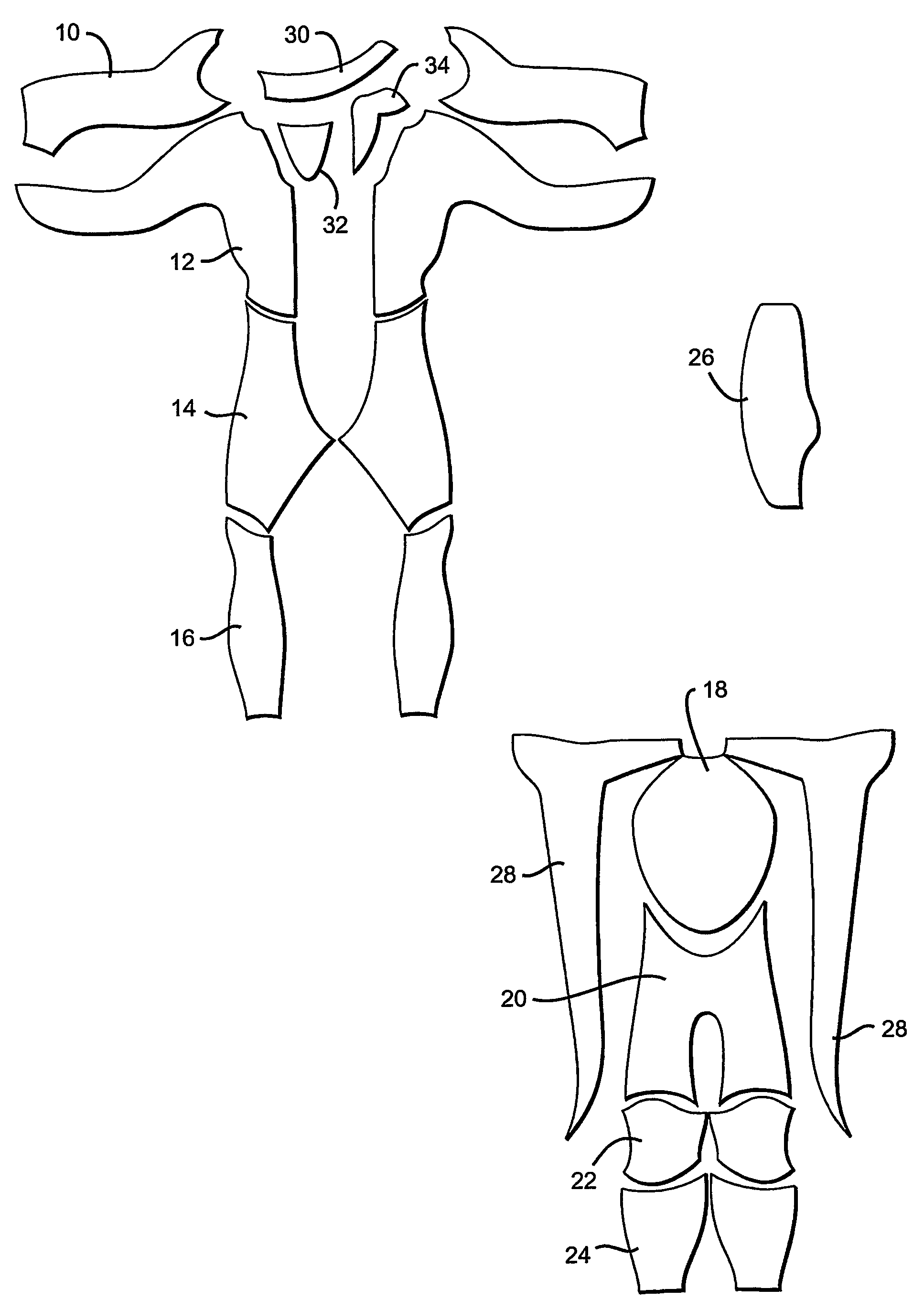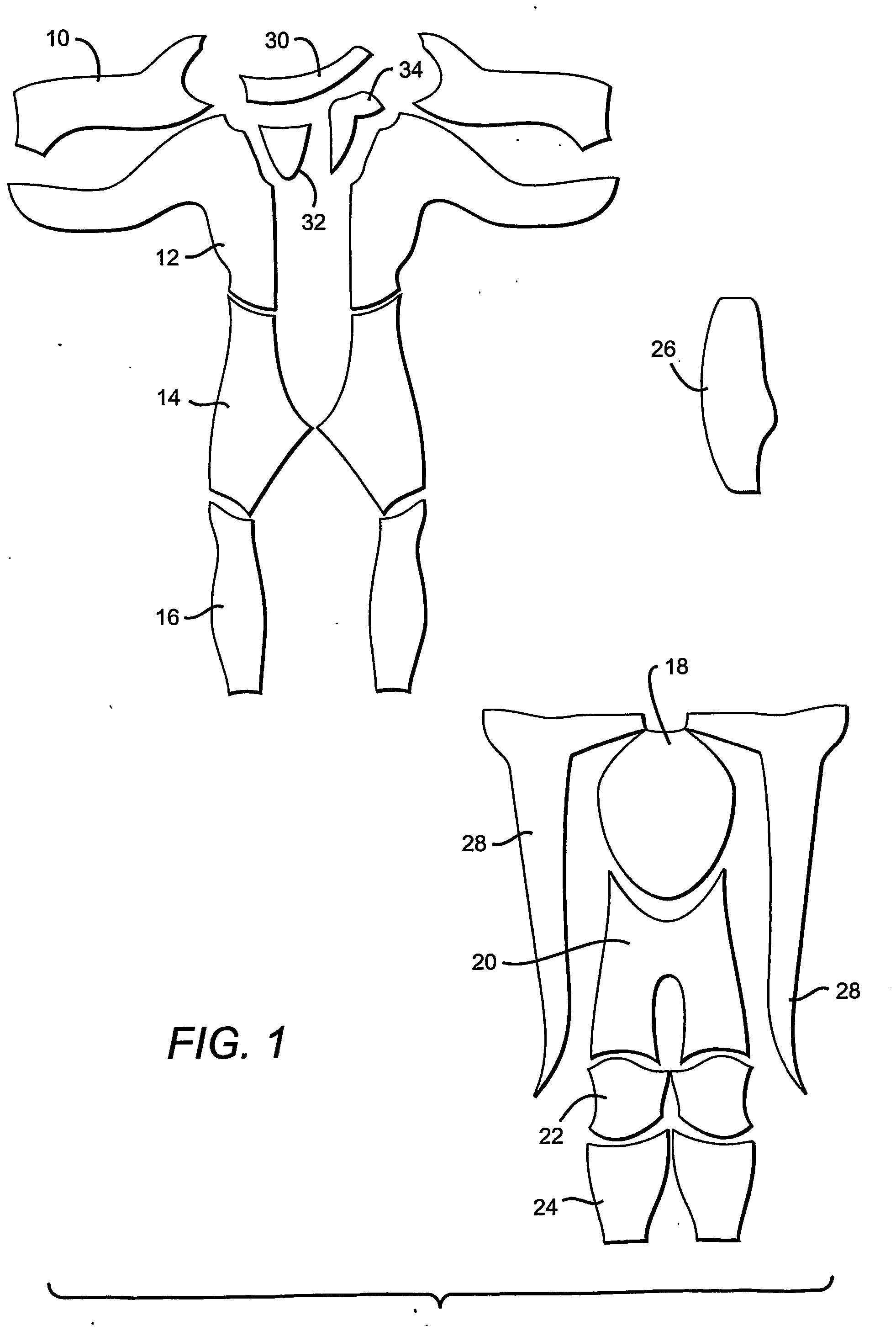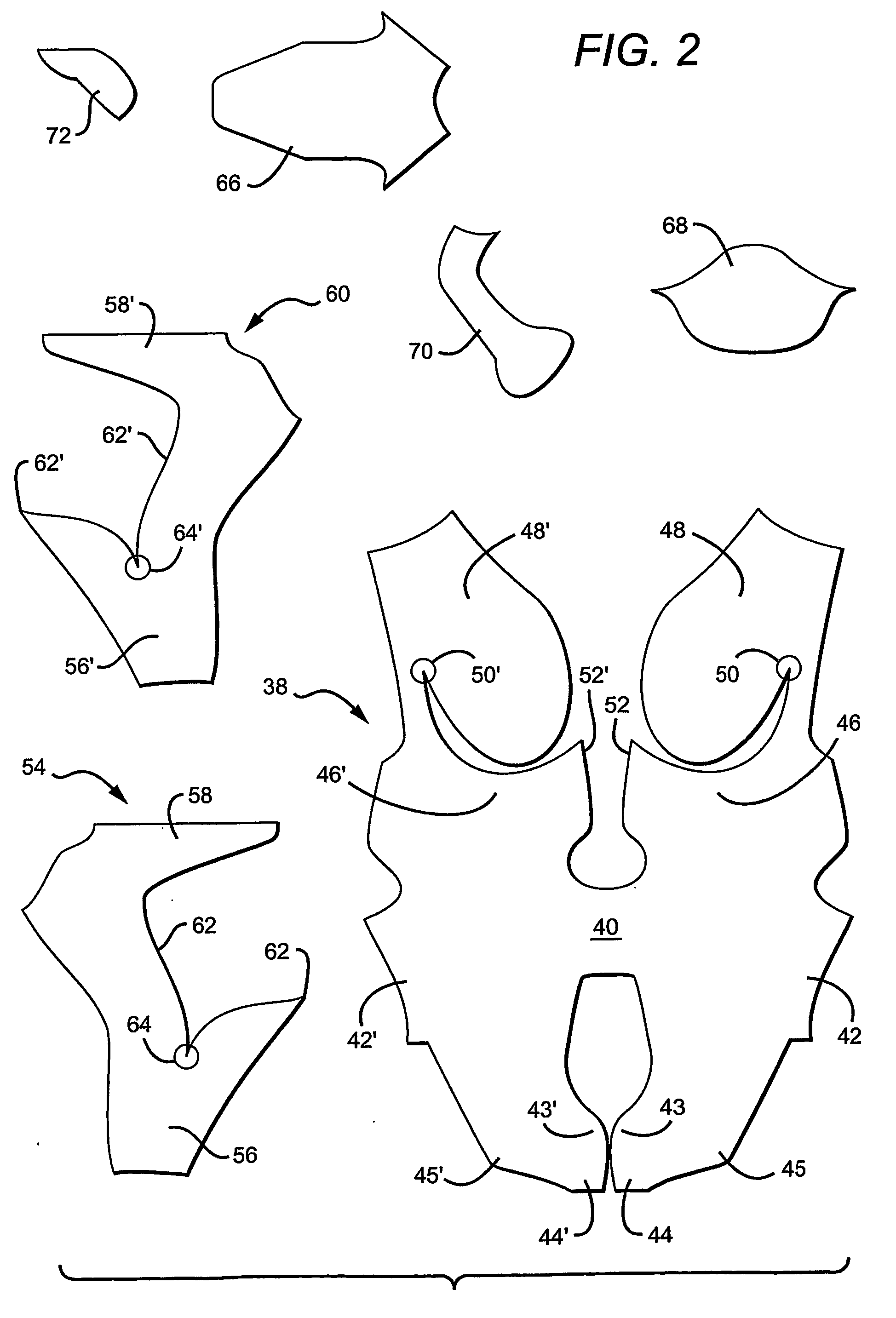Minimal seemed fitted garment
a technology of fitted garments and seams, applied in protective garments, waterborne vessels, underwater equipment, etc., can solve the problems of reducing the effectiveness of wetsuits in keeping the wearer warm, reducing the number of seams, and increasing the complexity of panel shapes, so as to reduce the total number of panels used, and the total seam length. , to achieve the effect of reducing the total number of panels, the complexity of panel cutting, and the number of seams
- Summary
- Abstract
- Description
- Claims
- Application Information
AI Technical Summary
Benefits of technology
Problems solved by technology
Method used
Image
Examples
Embodiment Construction
[0040] Referring now to the drawings, FIG. 1 shows a standard “MX” series wetsuit made by the applicant. The suit is made up of twenty separate panels that together form a wetsuit having bent arm and leg sections. The suit includes arm panels 10, back panels 12, seat panels 14, lower leg panels 16, a chest panel 18, front body panel 20, knee panels 22, lower leg panels 24, crotch panel 26, gussets 28, collar 30 and neck panels 32 and 34. The total length of the seams (as previously noted, exterior covering seams) in a medium sized wetsuit of this type amounts to 45 feet.
[0041] Referring now to FIG. 2 and FIGS. 3A to 3C, there is shown a wetsuit produced according to a preferred embodiment of the present invention. This embodiment is made up of seven panels (as previously noted, exterior covering panels). A first panel 38 having a torso section 40 is shaped to surround the waist region of a wearer's body. The two sides 42, 42′ of the torso section 40 meet and are joined at a lower s...
PUM
 Login to View More
Login to View More Abstract
Description
Claims
Application Information
 Login to View More
Login to View More - R&D
- Intellectual Property
- Life Sciences
- Materials
- Tech Scout
- Unparalleled Data Quality
- Higher Quality Content
- 60% Fewer Hallucinations
Browse by: Latest US Patents, China's latest patents, Technical Efficacy Thesaurus, Application Domain, Technology Topic, Popular Technical Reports.
© 2025 PatSnap. All rights reserved.Legal|Privacy policy|Modern Slavery Act Transparency Statement|Sitemap|About US| Contact US: help@patsnap.com



